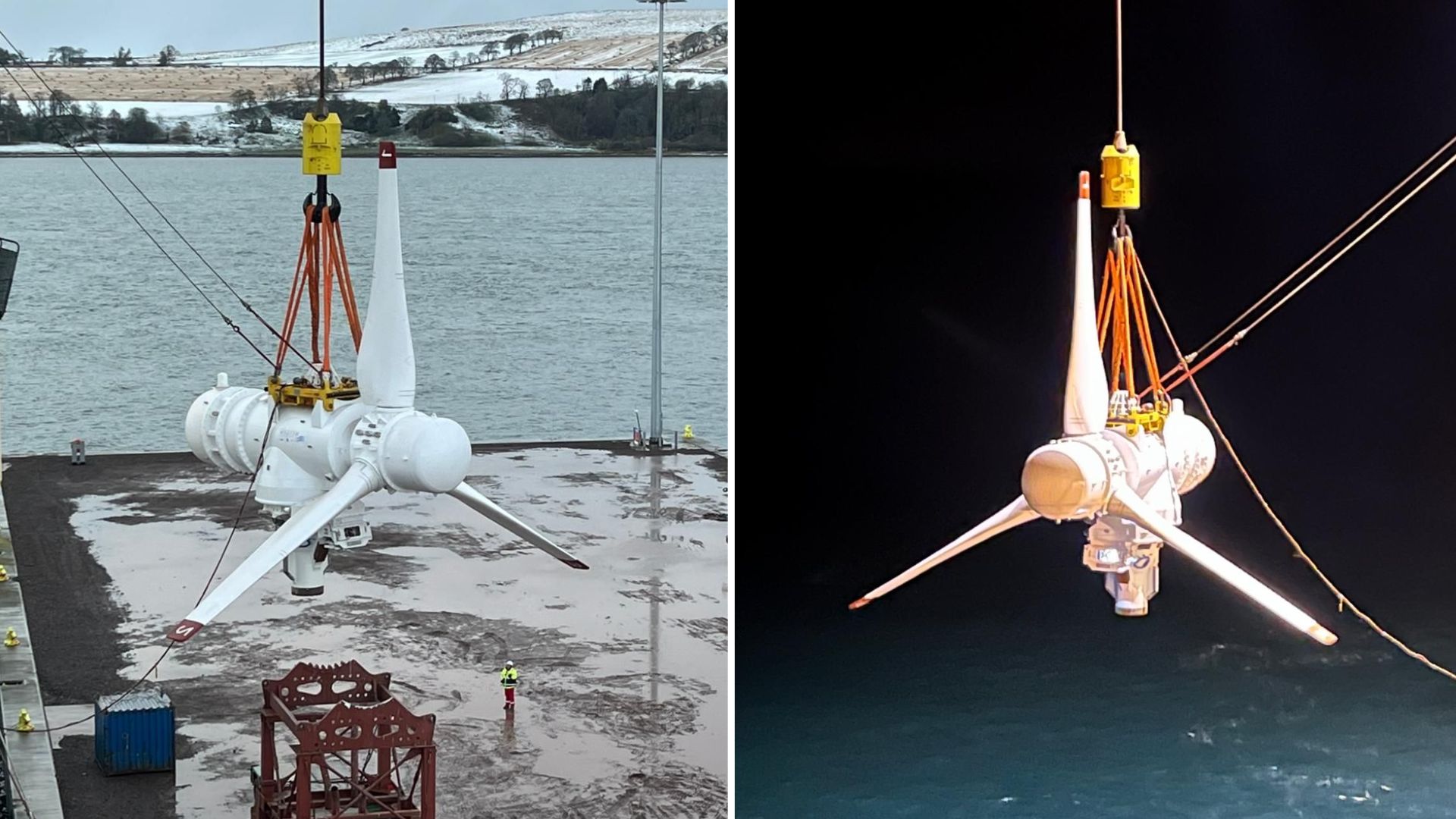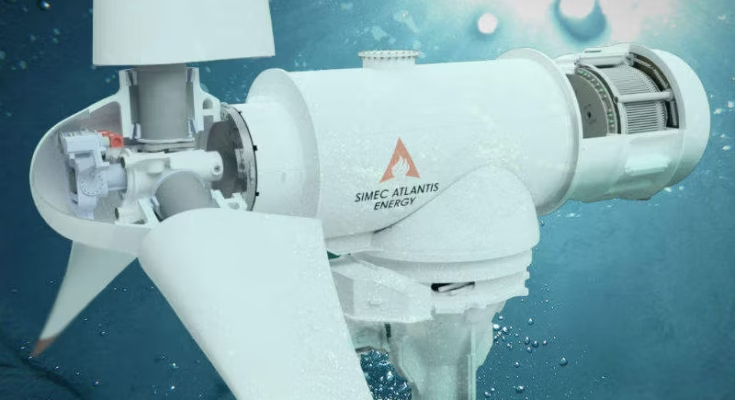In a major leap forward for renewable energy, Japan has officially activated its first megawatt-scale tidal turbine beneath the powerful currents of the Naru Strait. The machine, known as the AR1100, is built by Proteus Marine Renewables and marks a significant milestone not just for Japan, but for tidal energy development worldwide.

The AR1100 is a true engineering marvel. Designed to harness the steady, relentless energy of ocean currents, it can generate 1.1 megawatts (MW) of clean, continuous electricity — enough to power hundreds of homes. What’s even more impressive is its location: operating quietly beneath the surface, it captures the kinetic power of the tides without disturbing marine life or releasing emissions. The green electricity produced by the AR1100 is already flowing into the grid, providing sustainable energy to the Goto Islands, an archipelago known for its beautiful landscapes and growing eco-tourism sector.
But the AR1100 isn’t just about brute force; it’s smart, too. The turbine features real-time blade adjustment technology, allowing it to adapt to changes in current speed and direction automatically. This self-optimization ensures that the turbine is always operating at peak efficiency, no matter the conditions under the waves. Plus, the AR1100 is directly connected to Japan’s electrical grid, delivering clean energy with minimal transmission loss.

This isn’t Proteus Marine Renewables’ first foray into tidal energy — the company has previously achieved success with similar technology in the United Kingdom, where tidal power projects are gaining momentum. Now, by replicating that success in Japan, Proteus is proving that tidal energy can be a viable, scalable, and dependable form of renewable power in different parts of the world.
The Naru Strait was carefully selected for this project because of its particularly strong tidal currents, which are ideal for high-efficiency generation. Unlike solar and wind energy, which can fluctuate with the weather, tidal currents are extremely predictable, making tidal energy a reliable cornerstone for a diversified renewable energy portfolio.

Globally, tidal technology is undergoing a renaissance. Scotland has been a pioneer with projects like the MeyGen array, while France and the United States are investing heavily in tidal infrastructure and research. With the AR1100 now operational, Japan is stepping onto the global stage as a serious contender in the race to develop the next generation of renewable energy sources.
The implications of this project go far beyond the Goto Islands. Japan, an island nation with vast coastal waters, could potentially expand its use of tidal energy on a much larger scale. With over 29,000 kilometers of coastline and significant tidal resources, the country is uniquely positioned to tap into ocean currents as a long-term, stable source of energy.
Moreover, the timing could not be better. Following the 2011 Fukushima disaster, Japan has been searching for safer and more sustainable alternatives to nuclear power. While solar and wind have grown significantly, tidal energy represents a third pillar of renewables that could provide baseload power without the intermittency issues that plague other green technologies.
Proteus Marine Renewables’ success with the AR1100 is likely to inspire other nations in the Pacific Rim to consider tidal energy as part of their strategies for energy transition. With its advanced technology, smart design, and proven reliability, the AR1100 might just be the beginning of a tidal revolution — one that turns the rhythm of the ocean into an endless source of clean, dependable power.
As Japan continues to invest in cutting-edge green technologies, projects like this show that the future of energy could very well be underwater — and the tide, quite literally, is turning.



